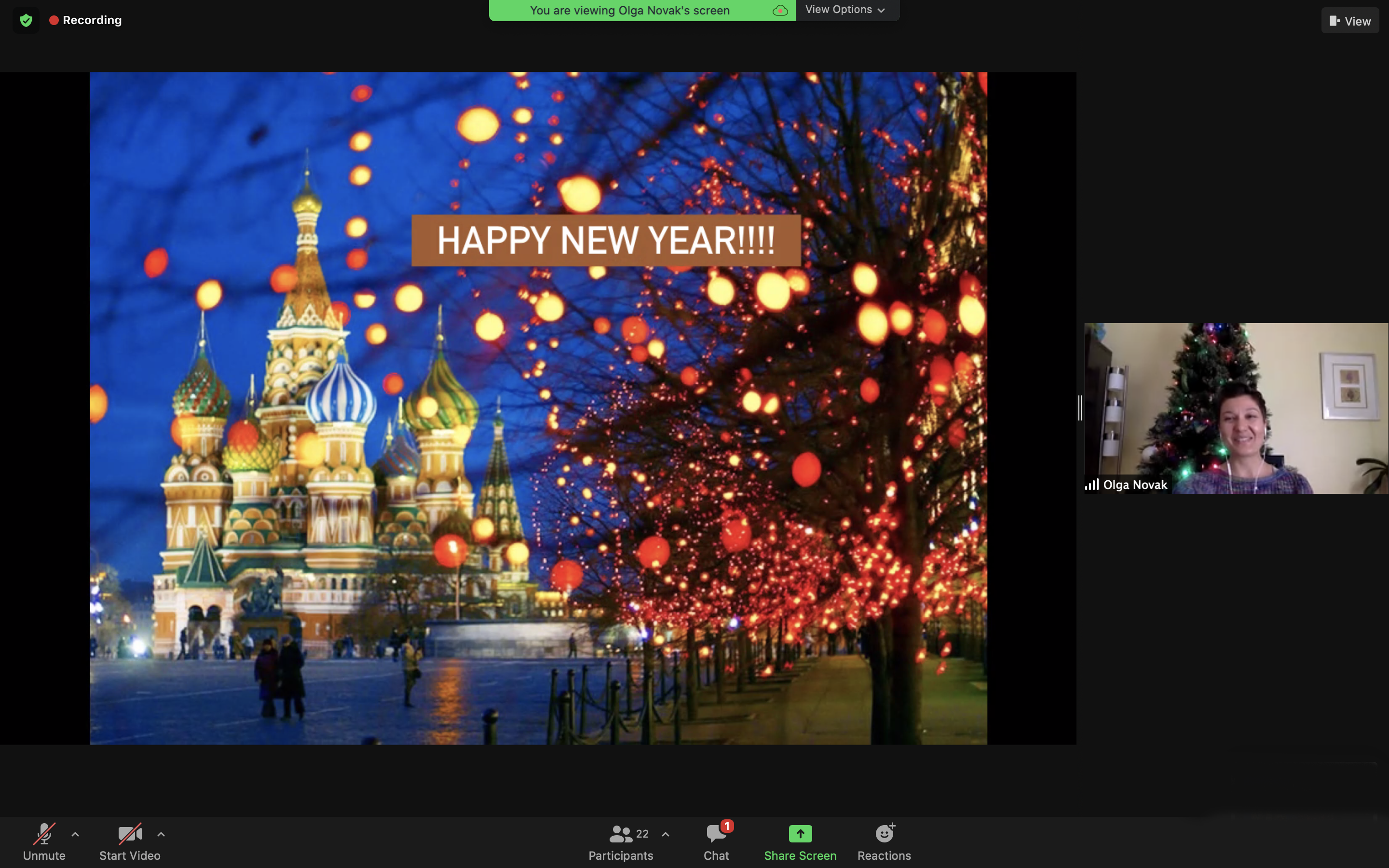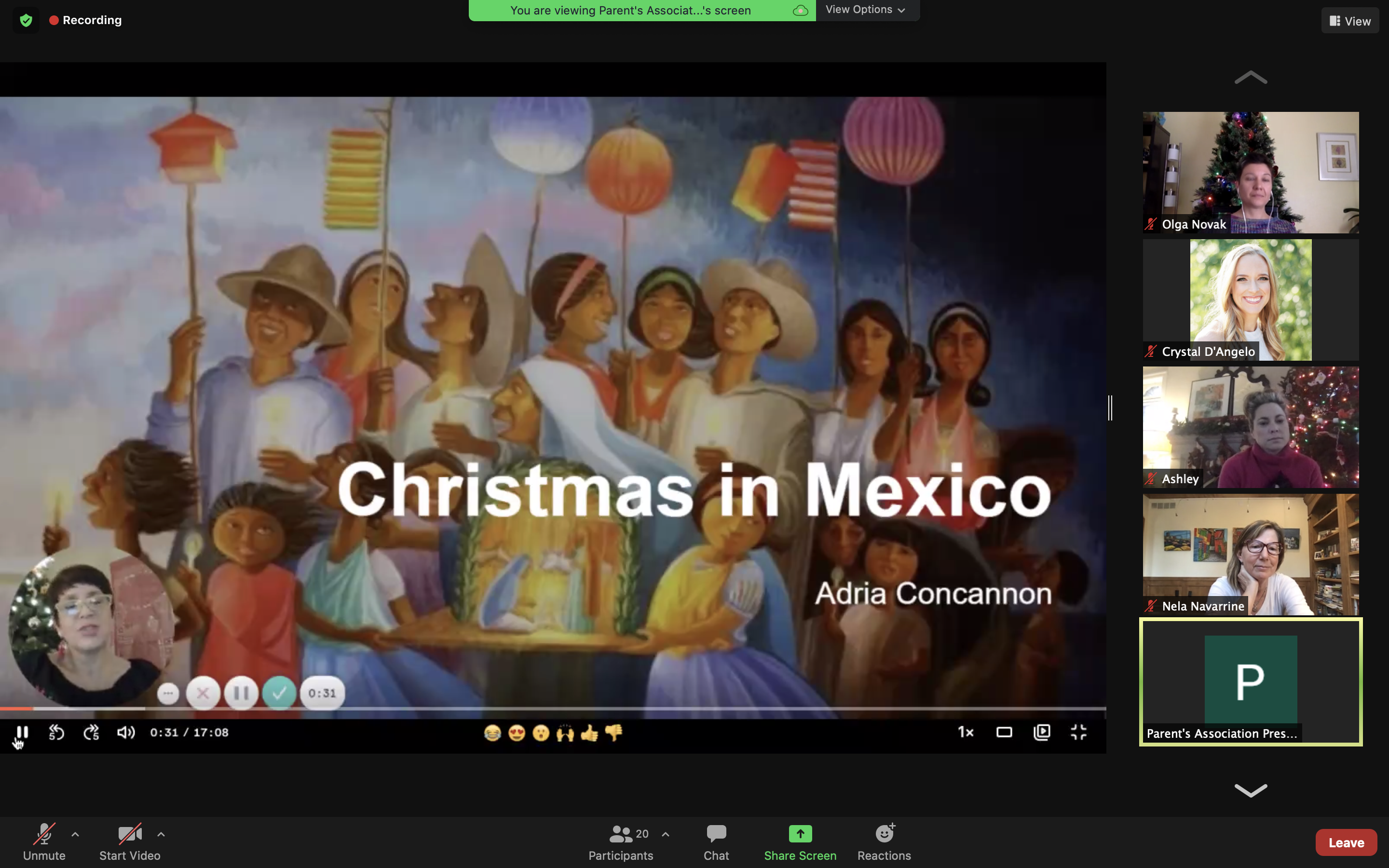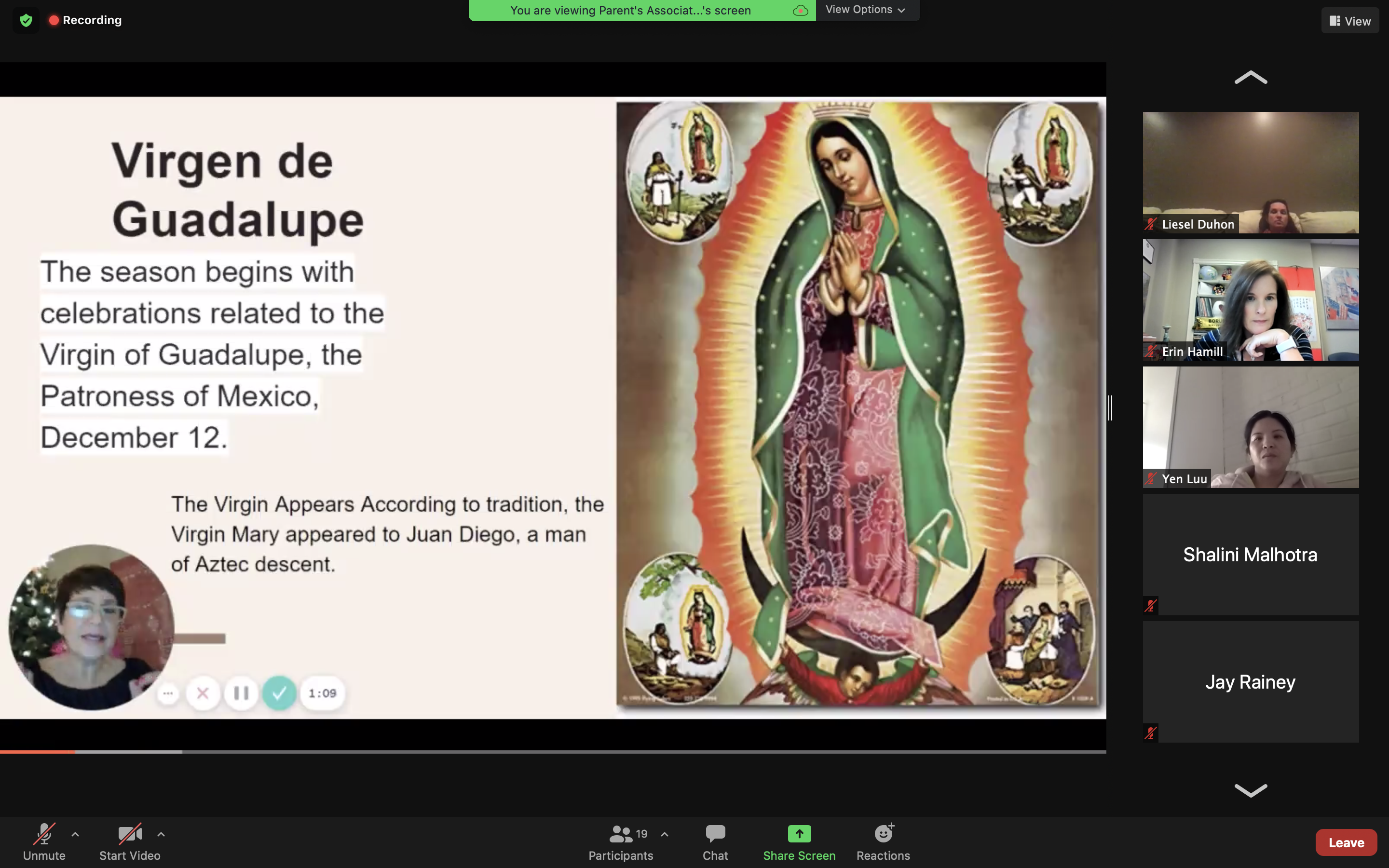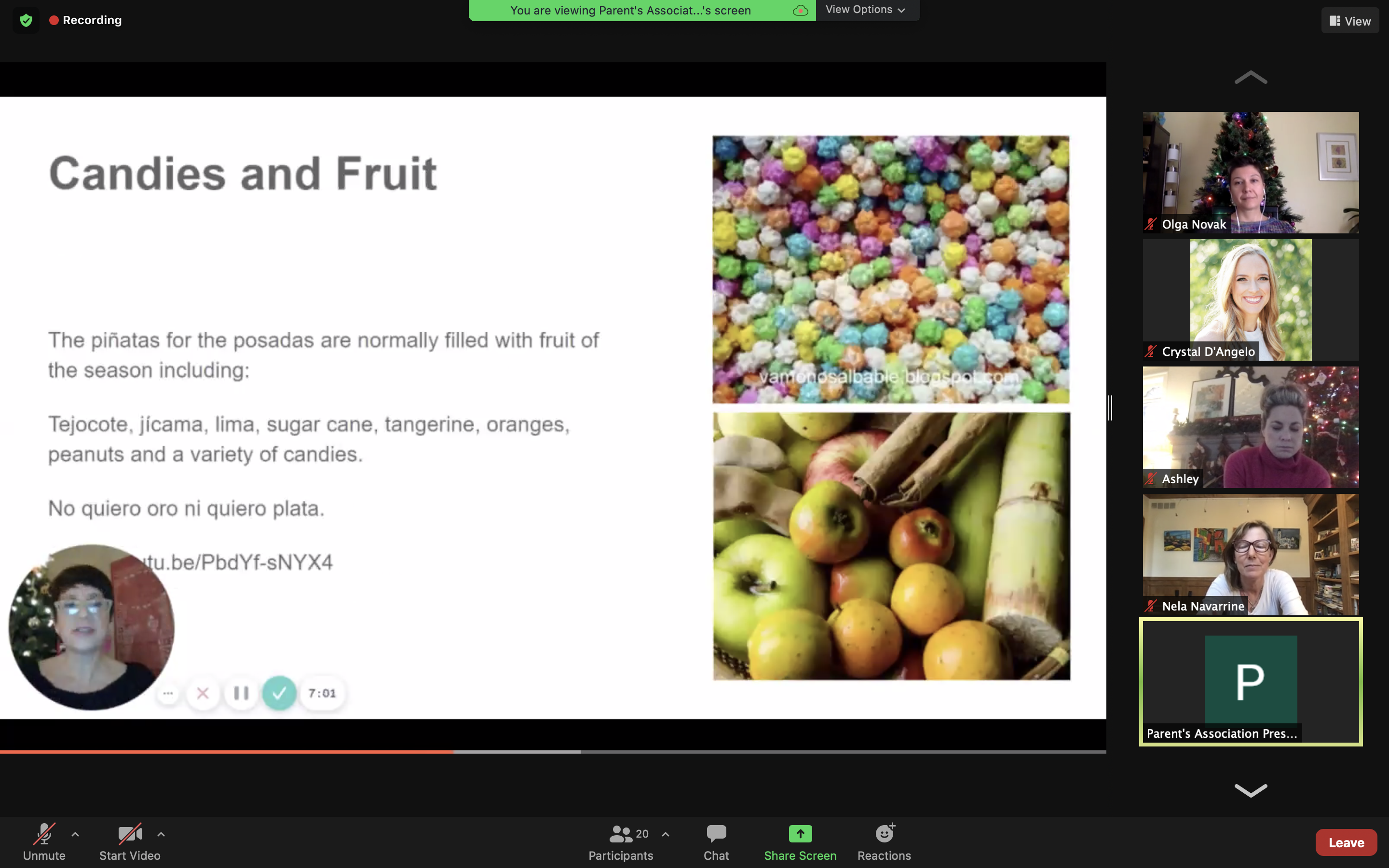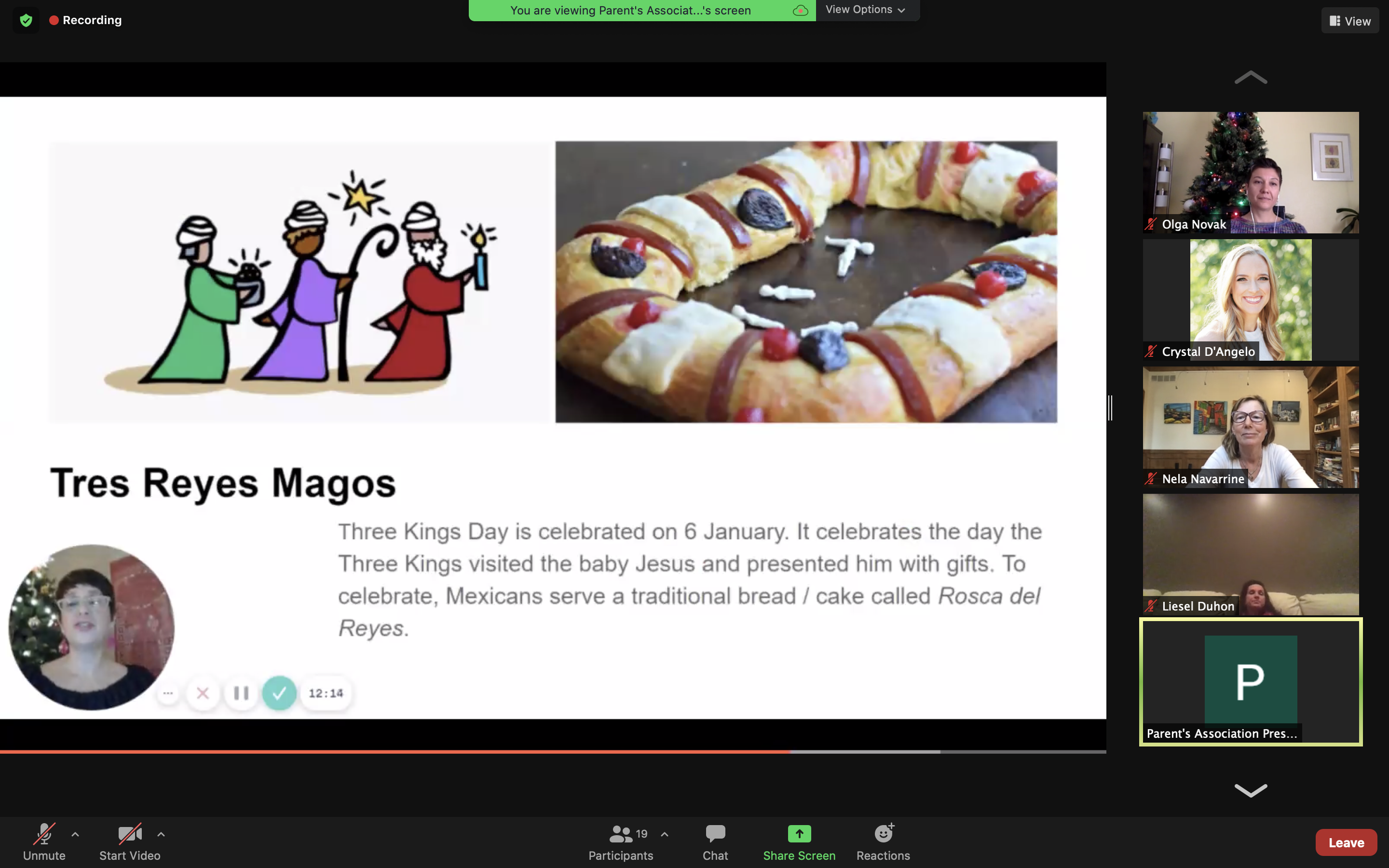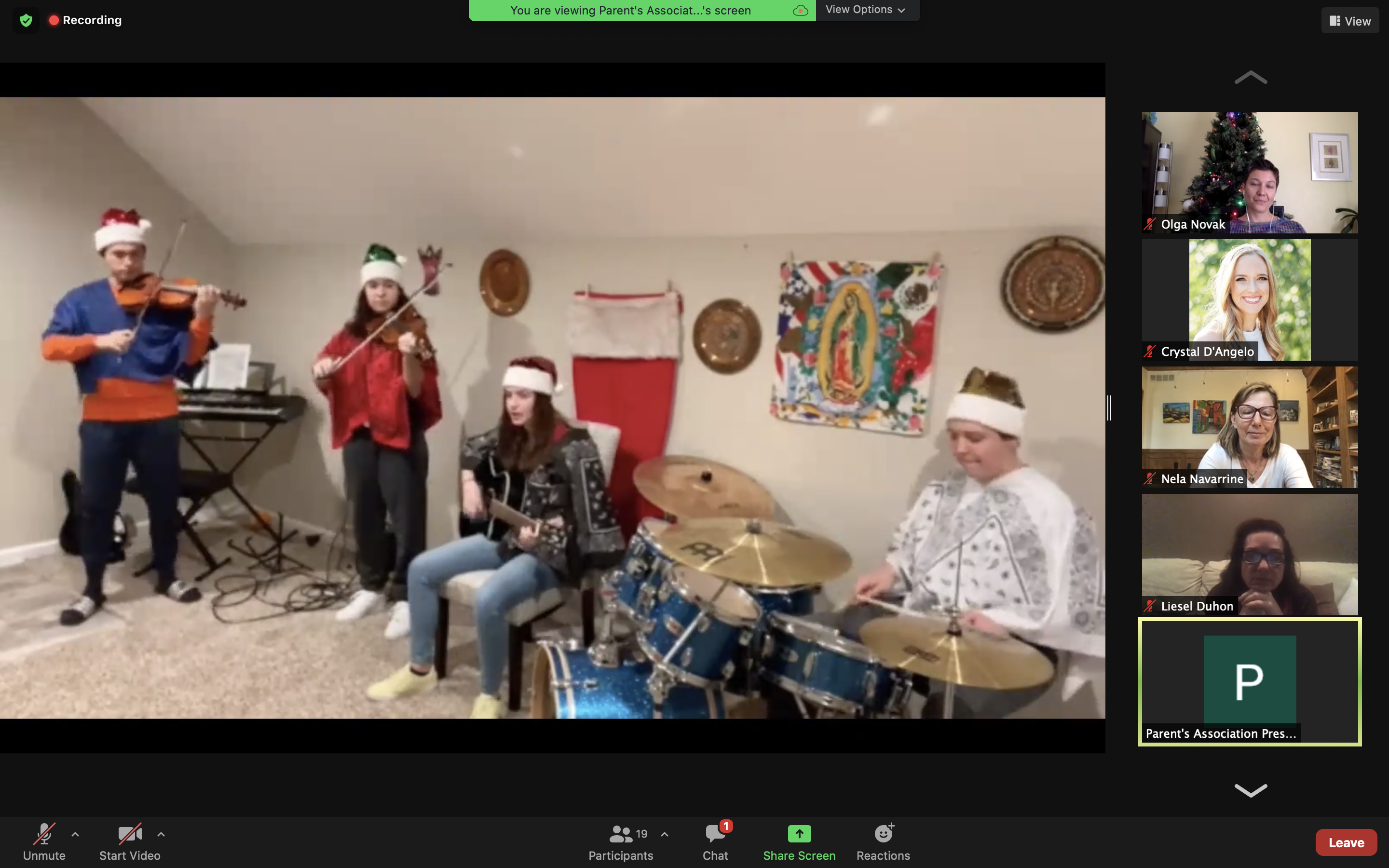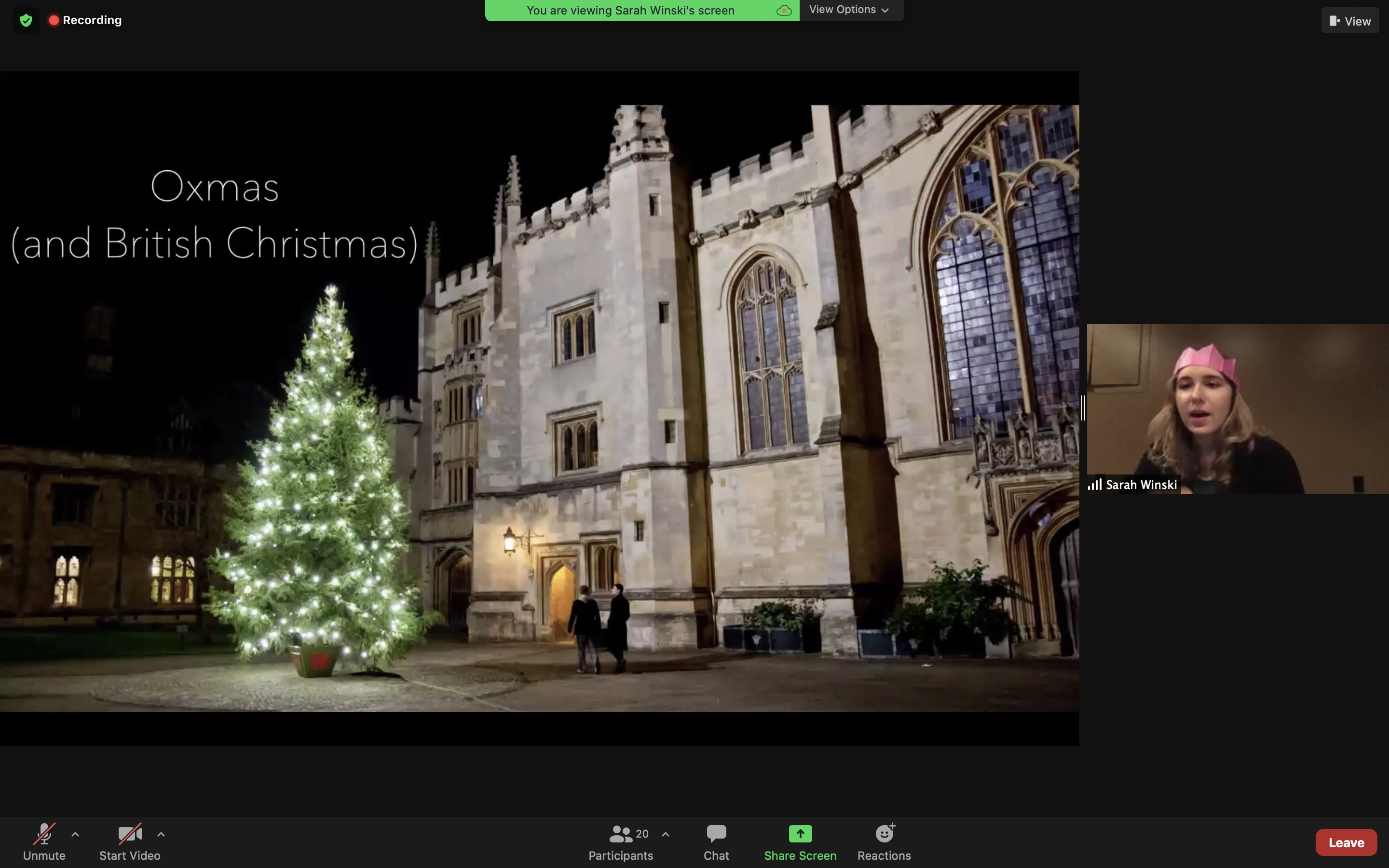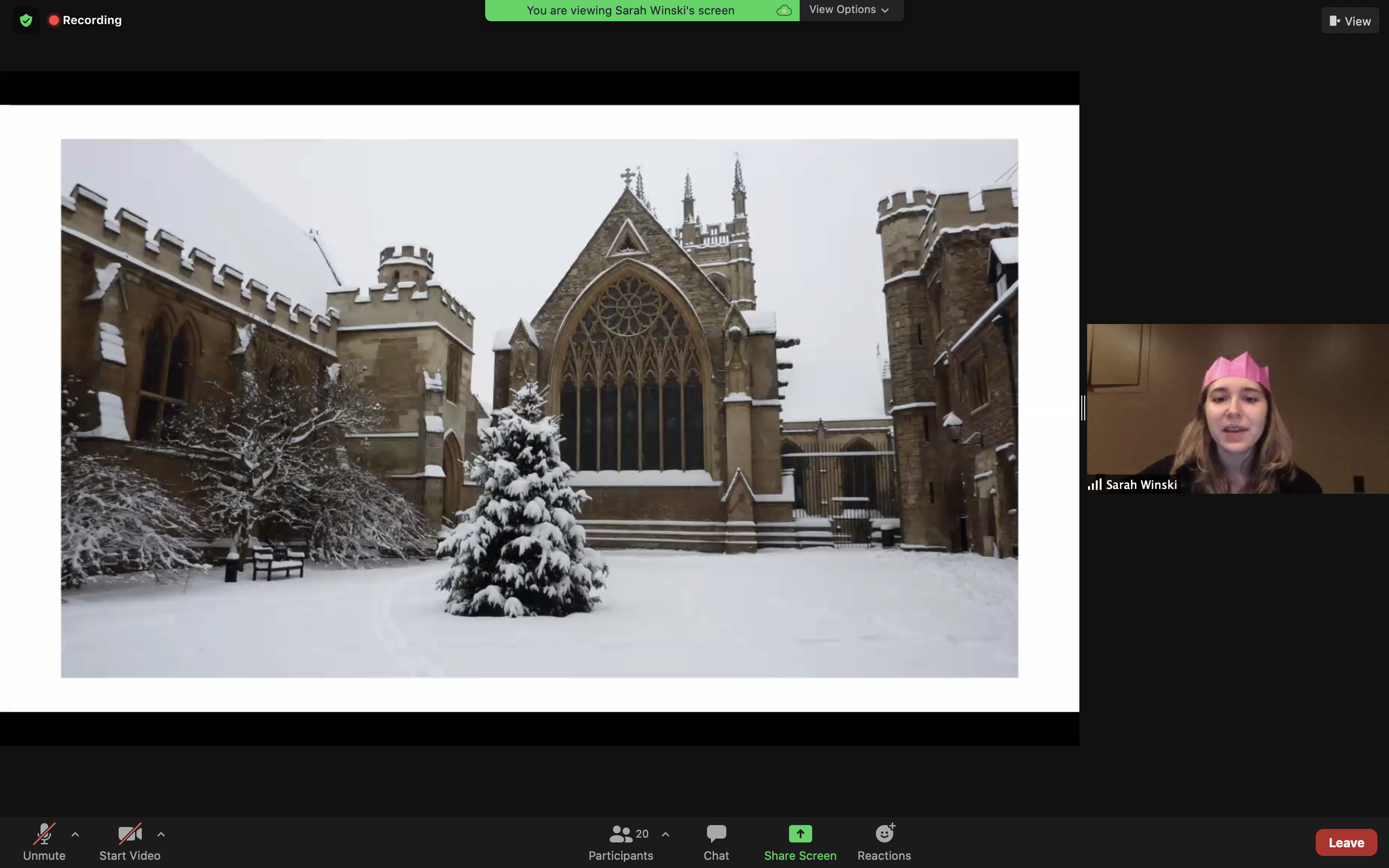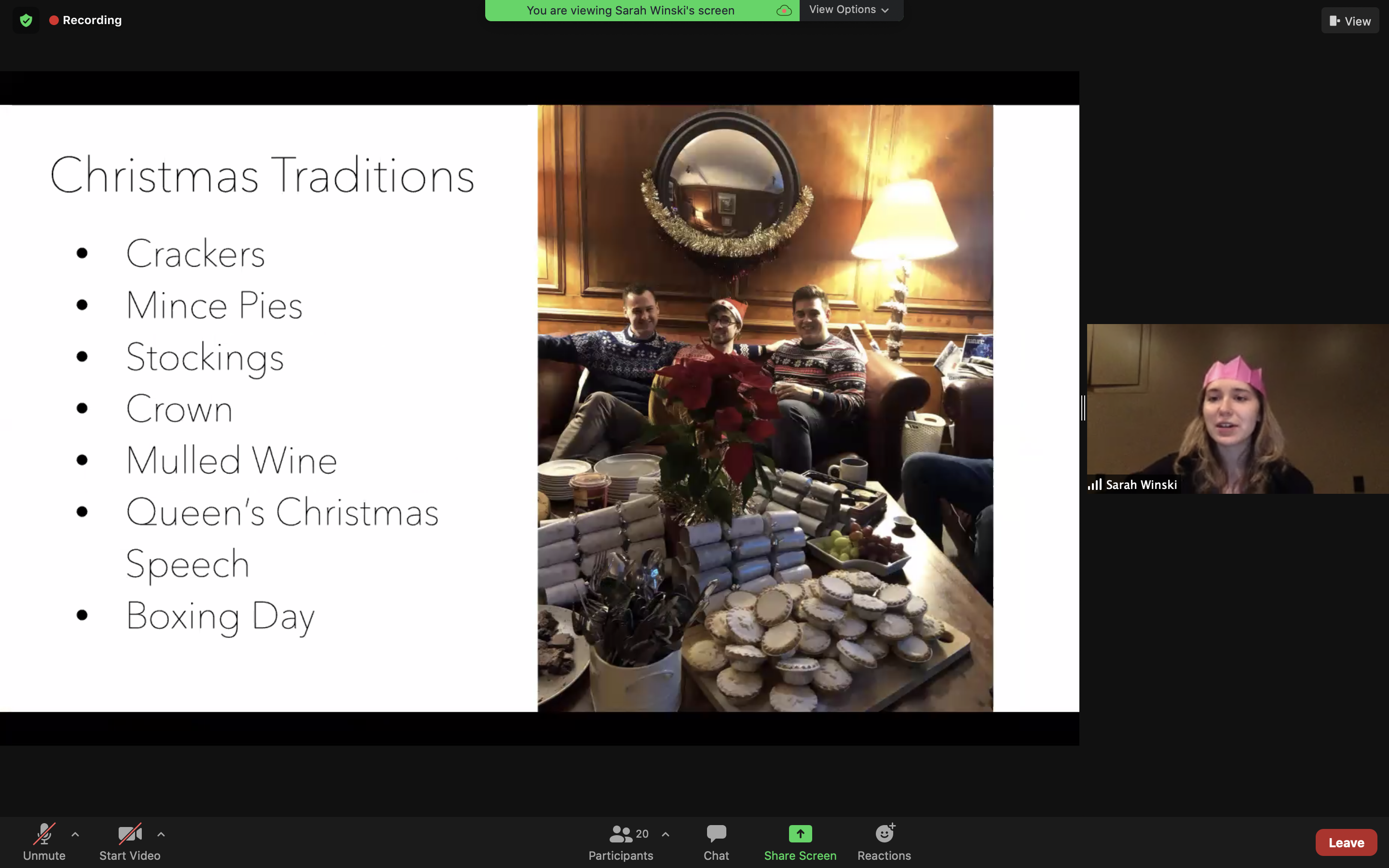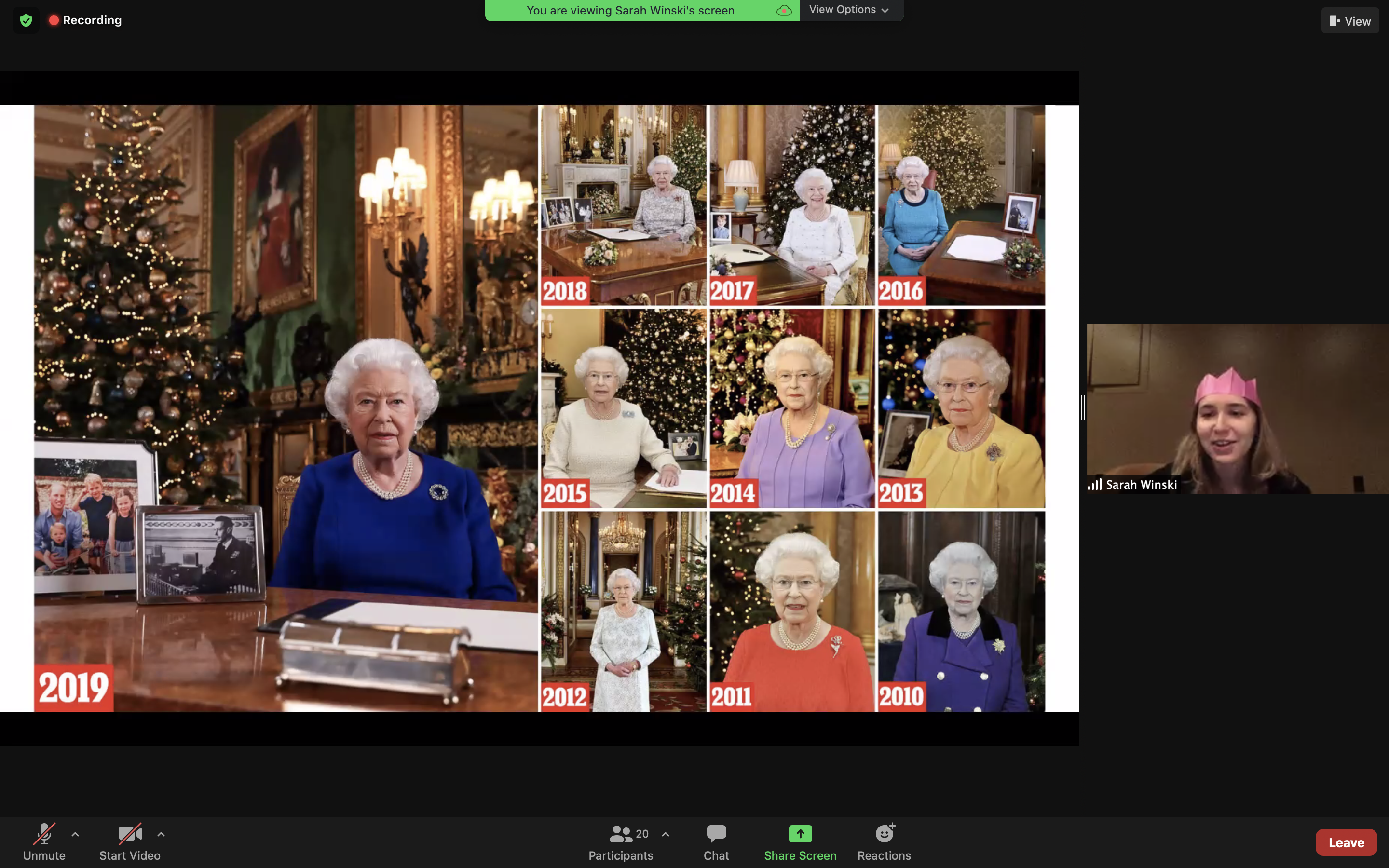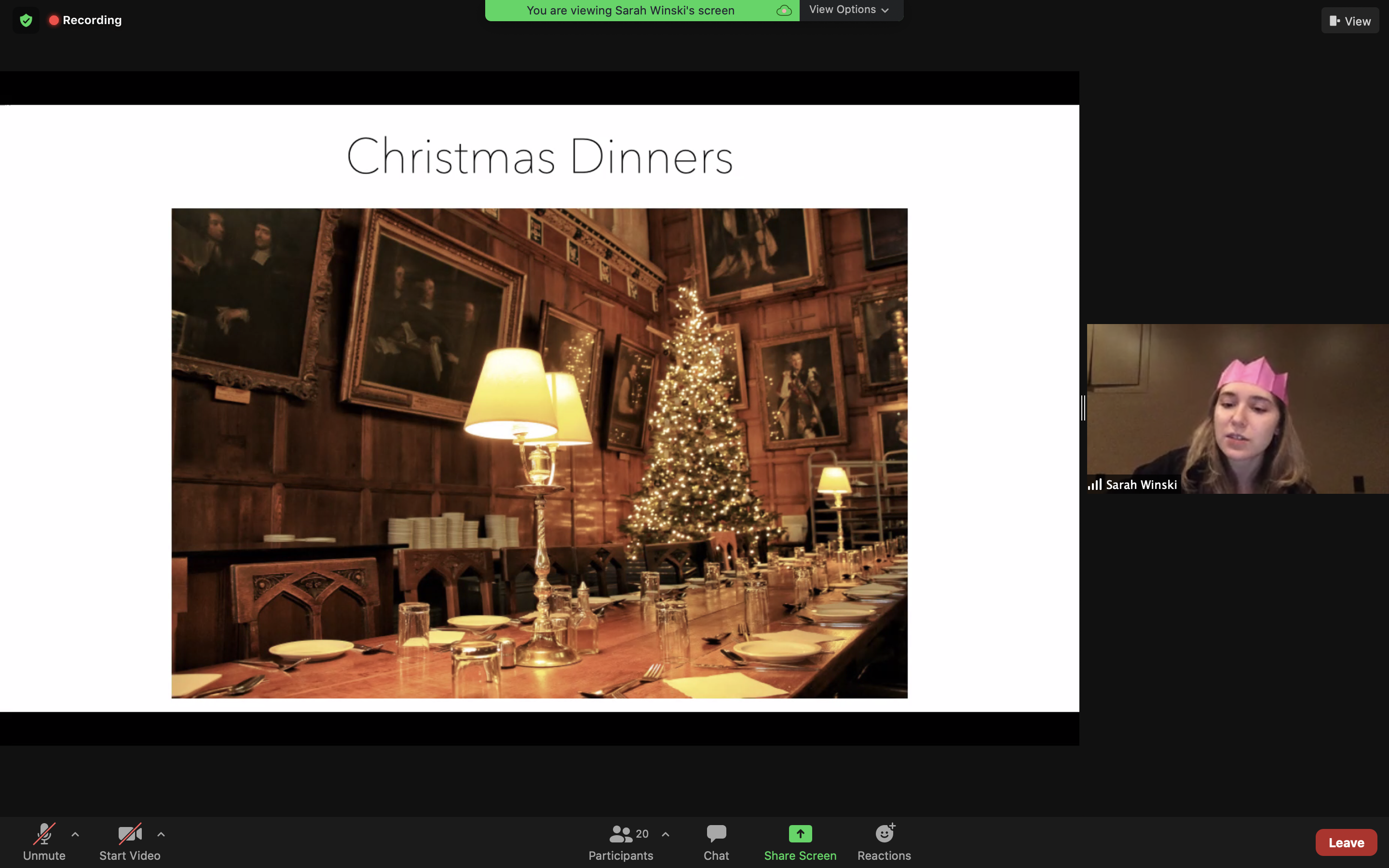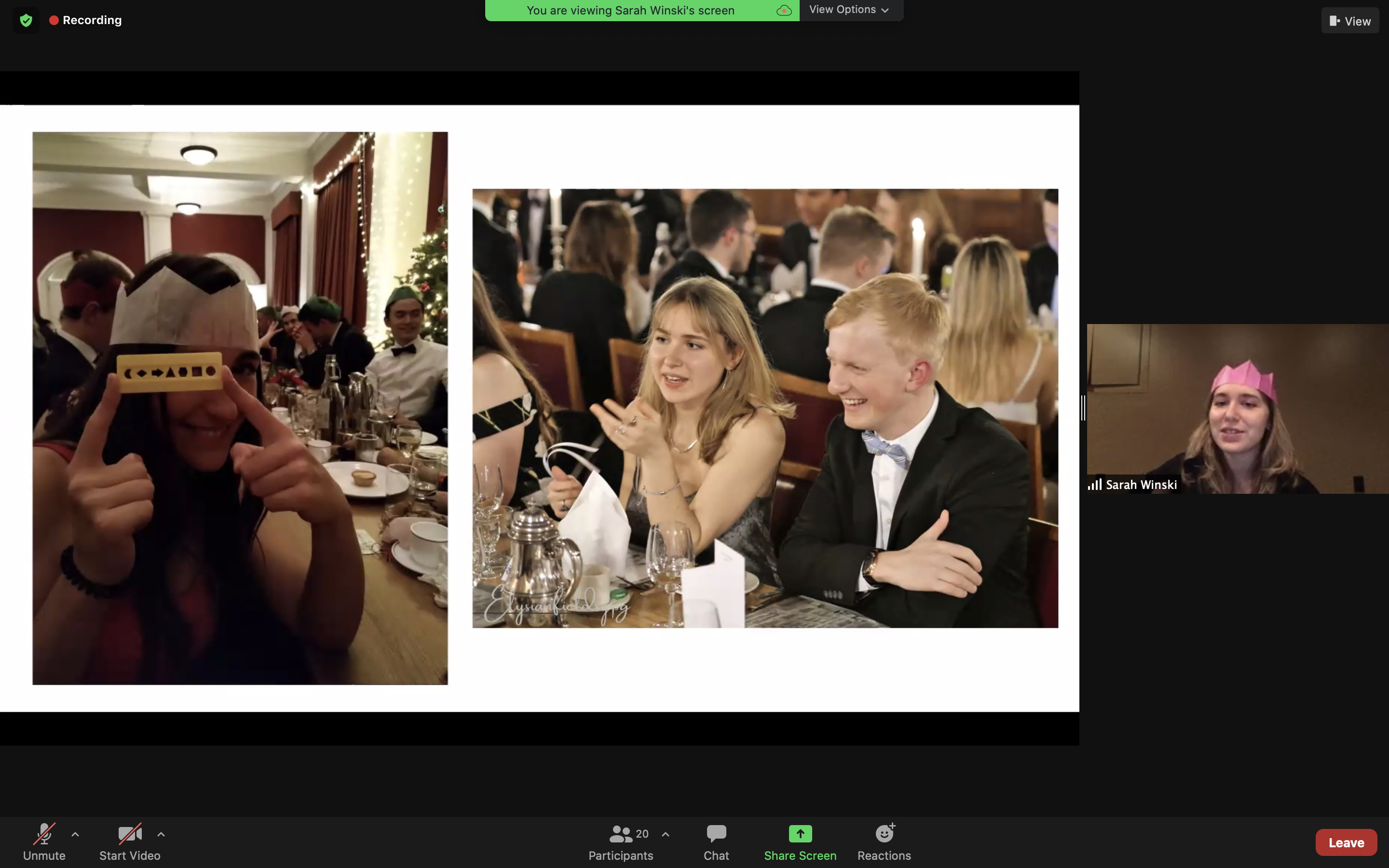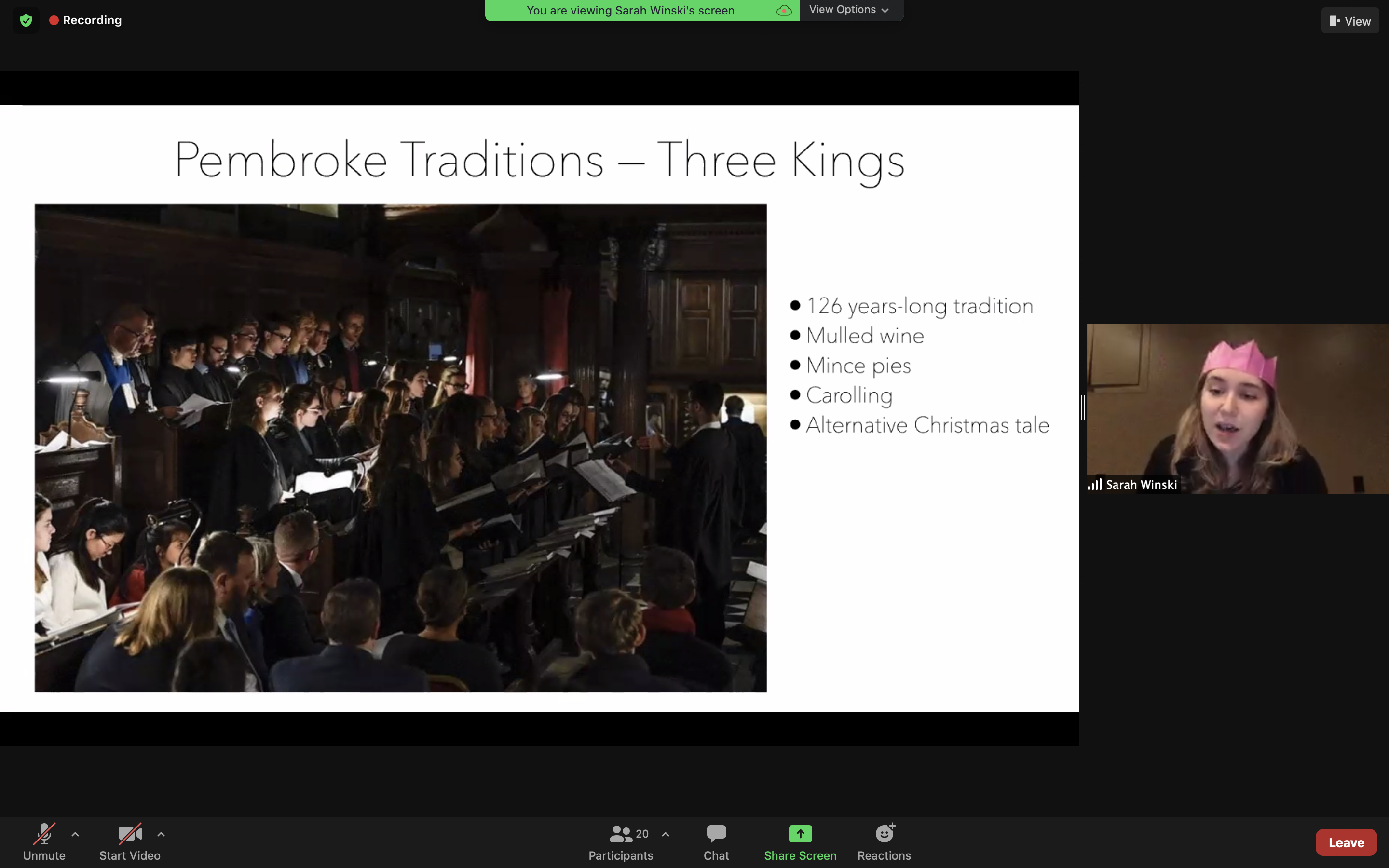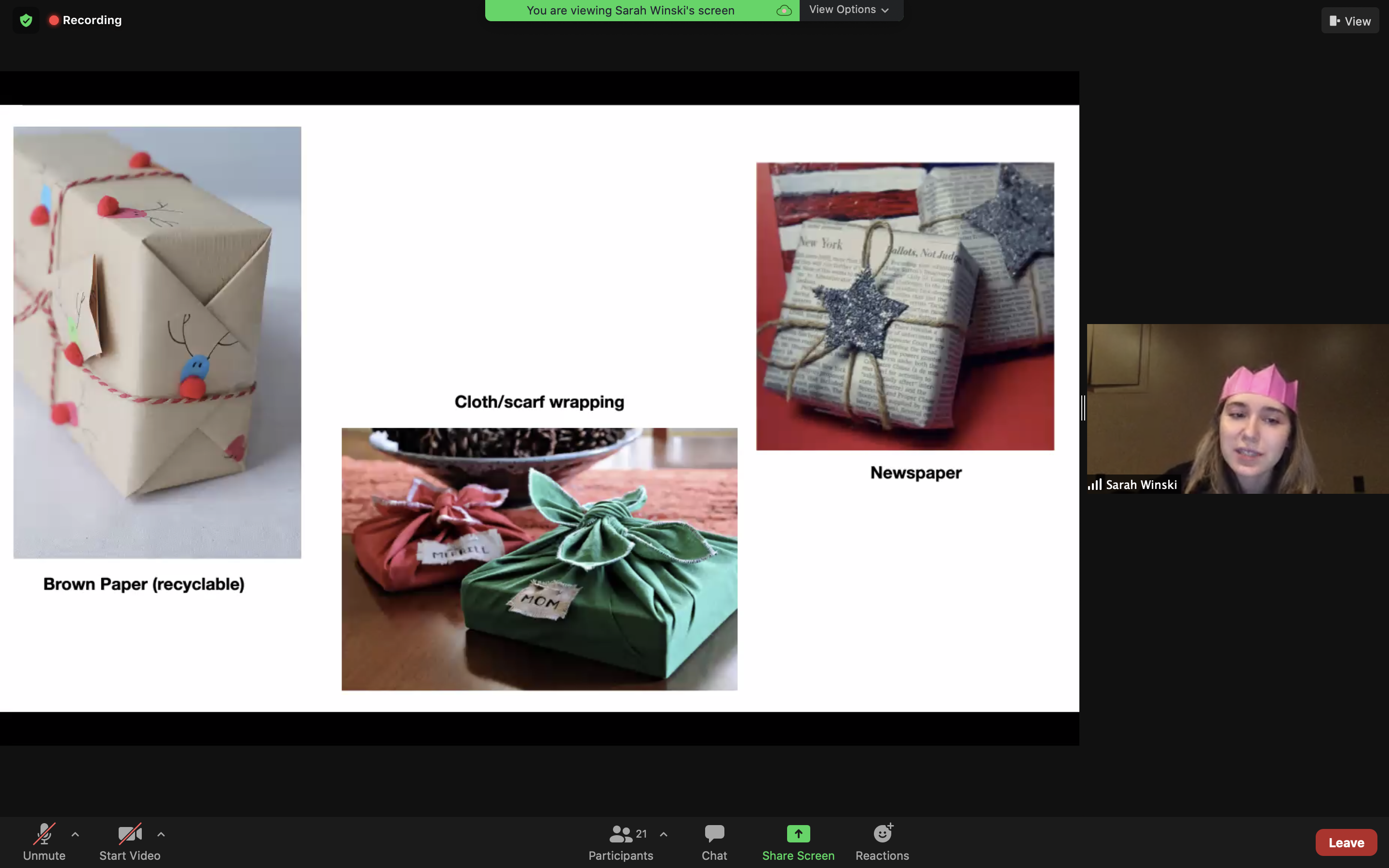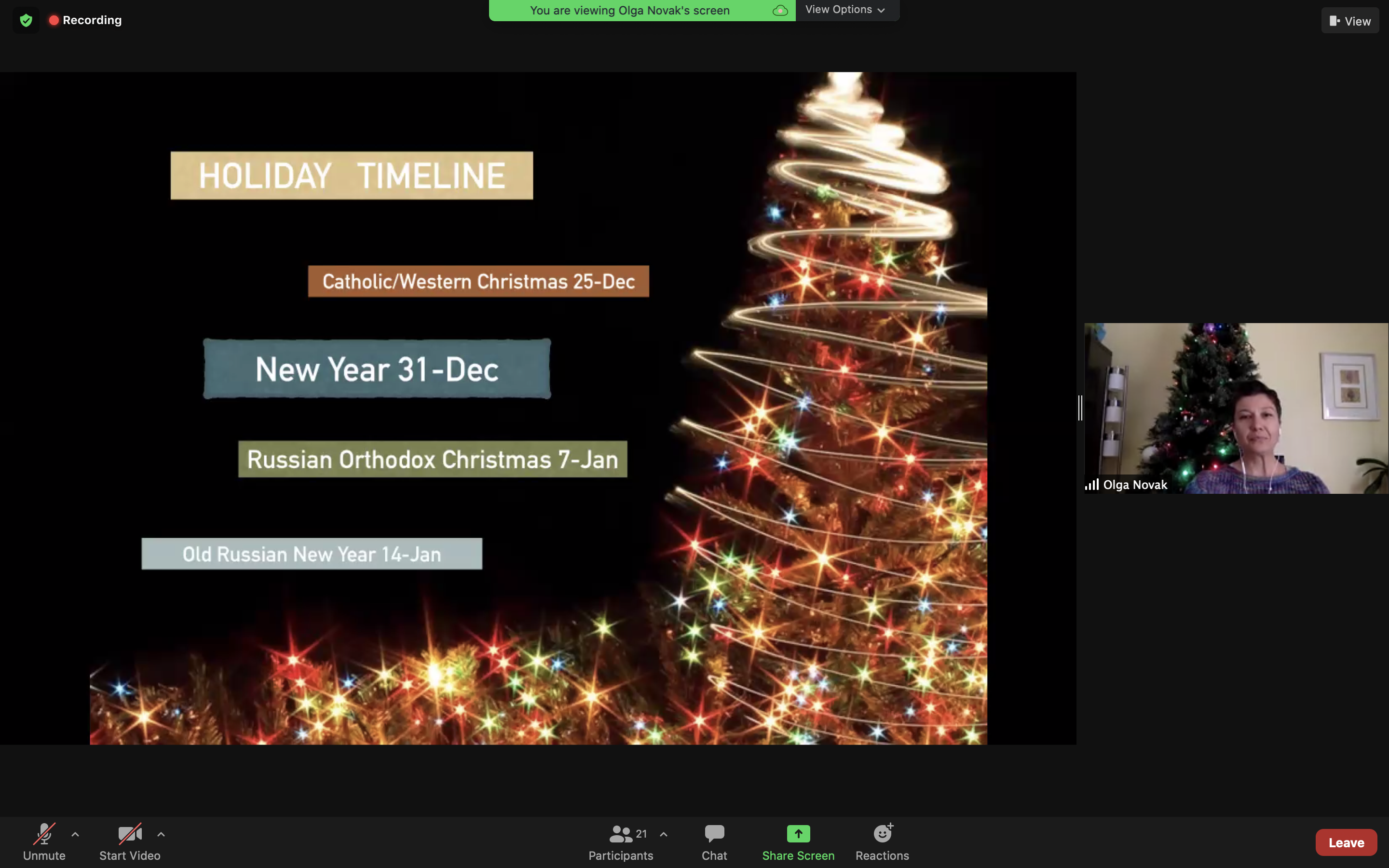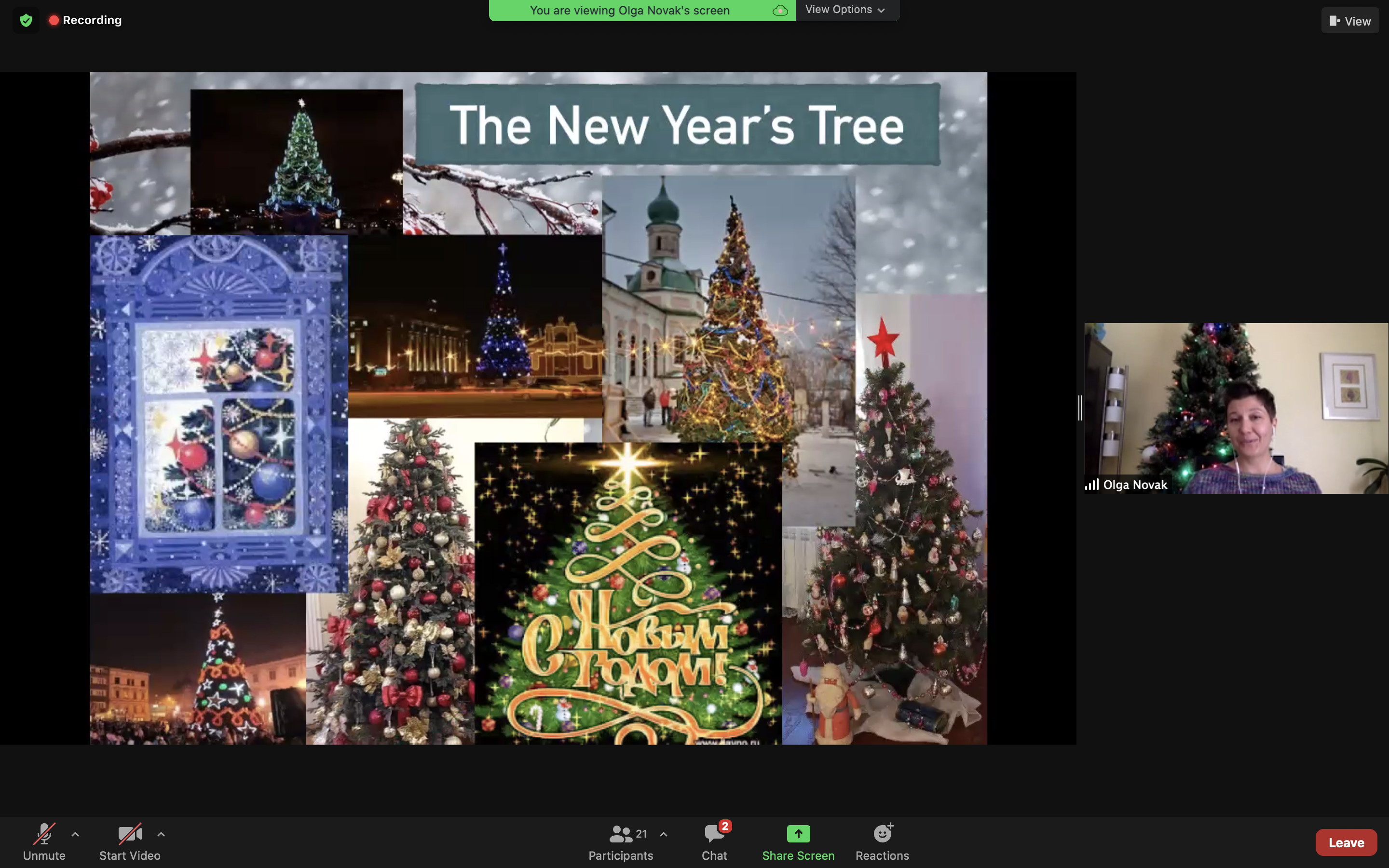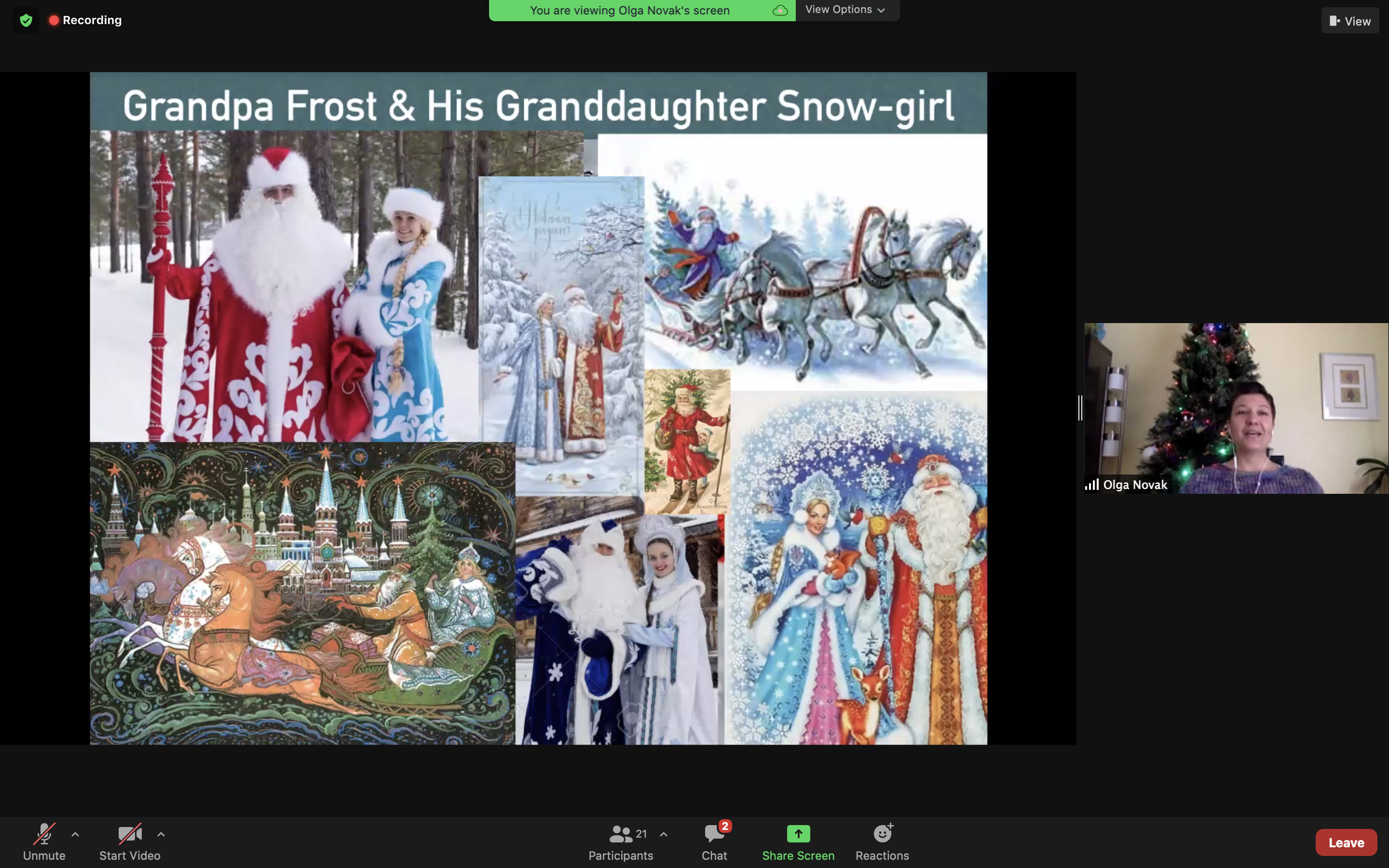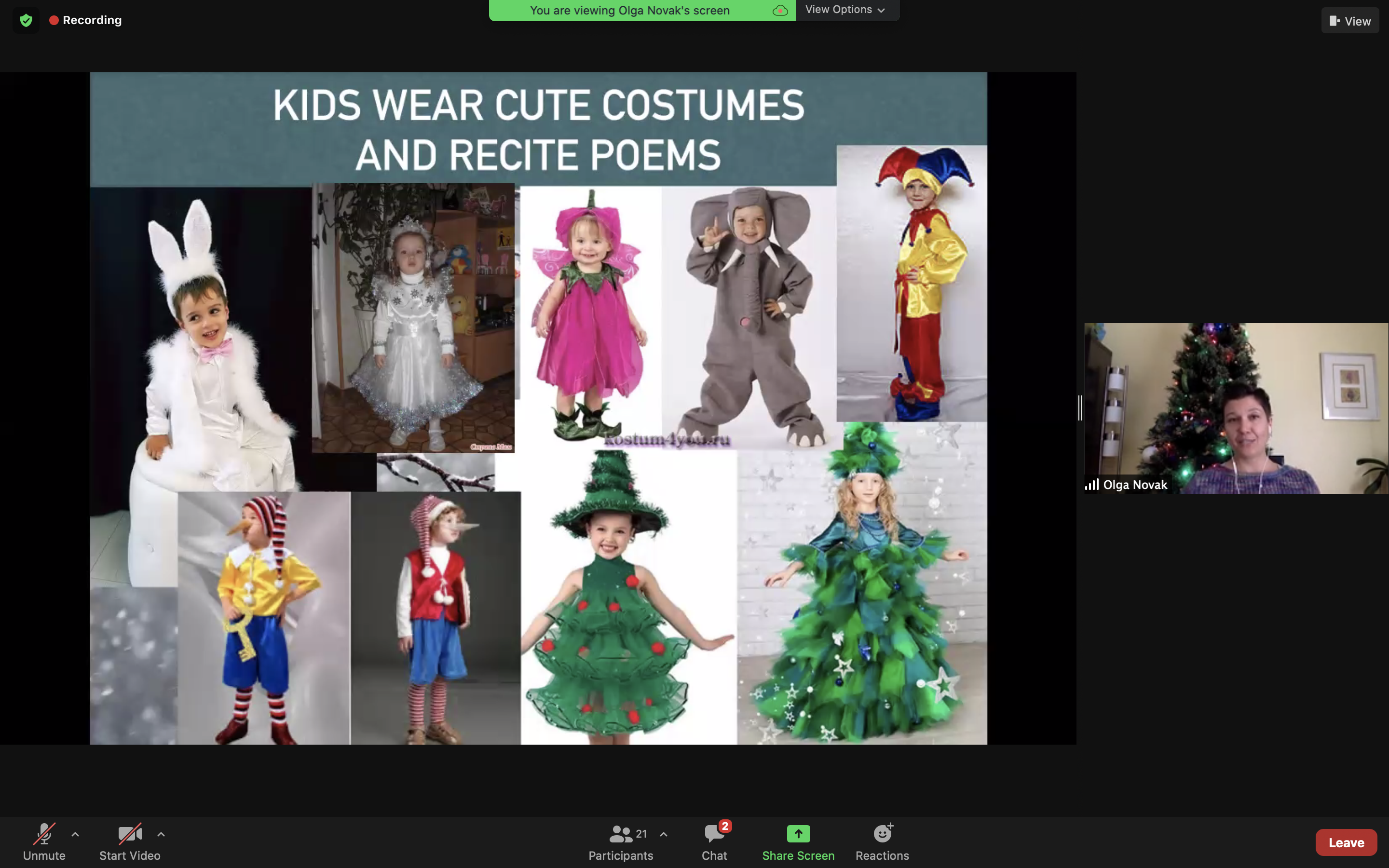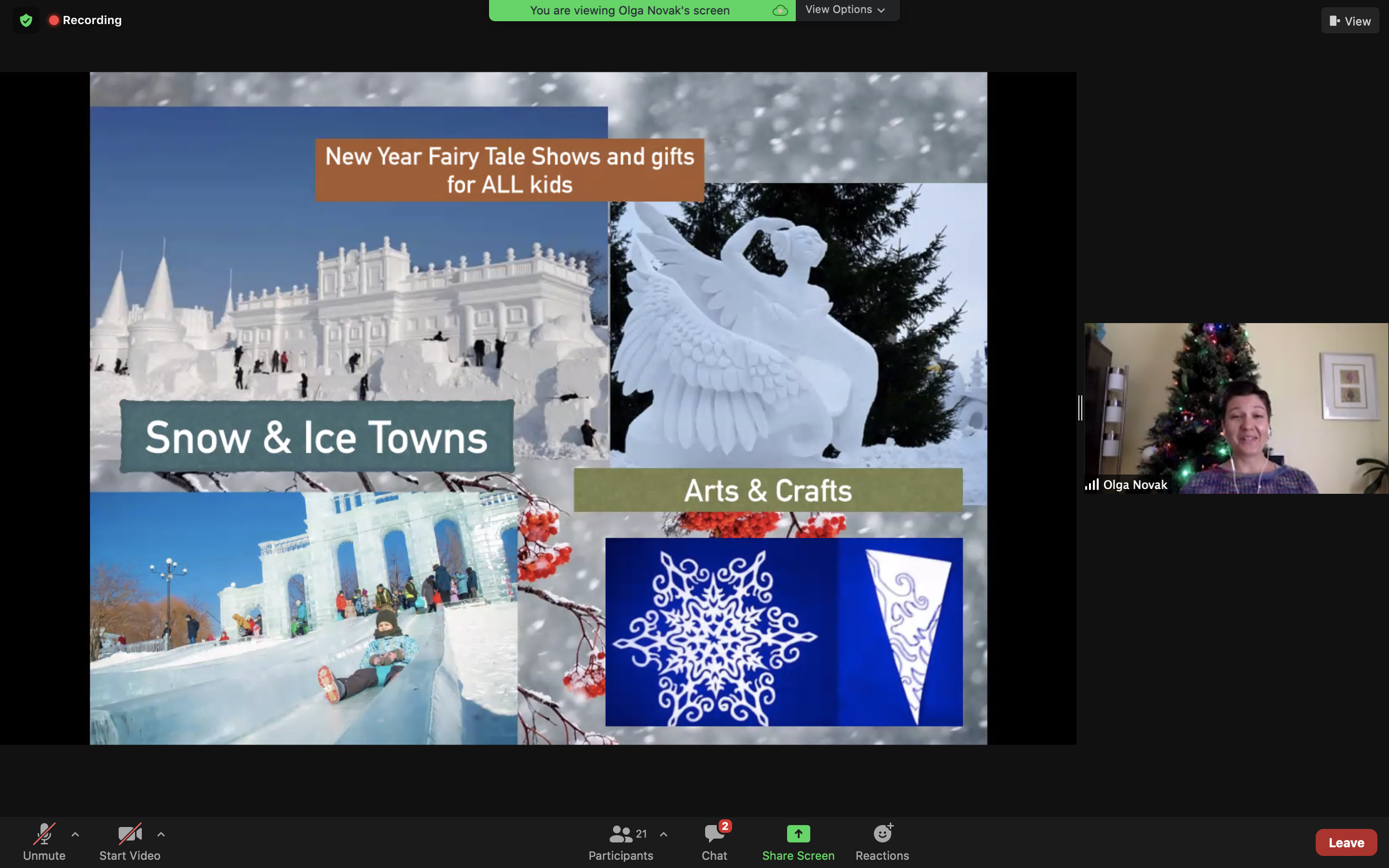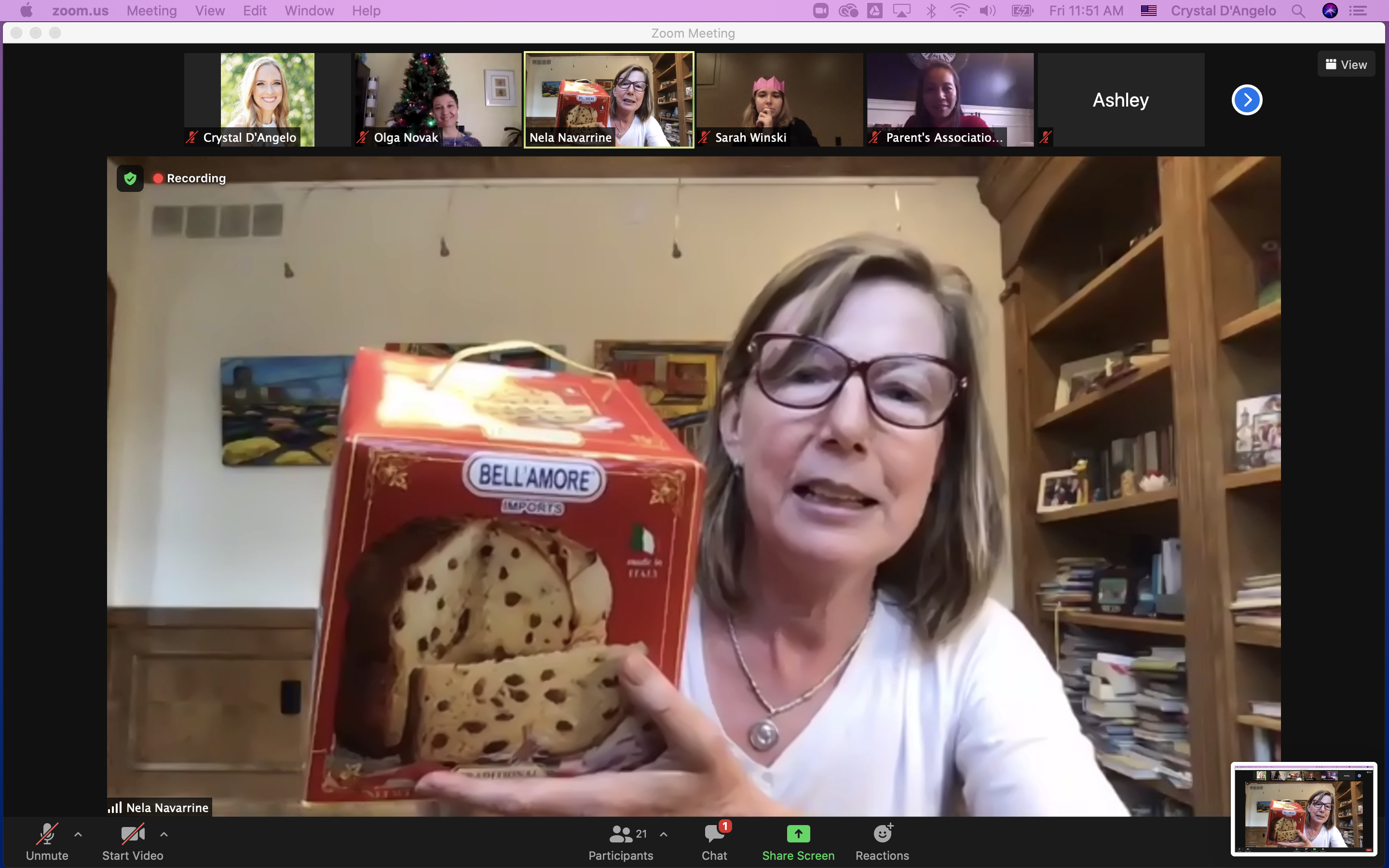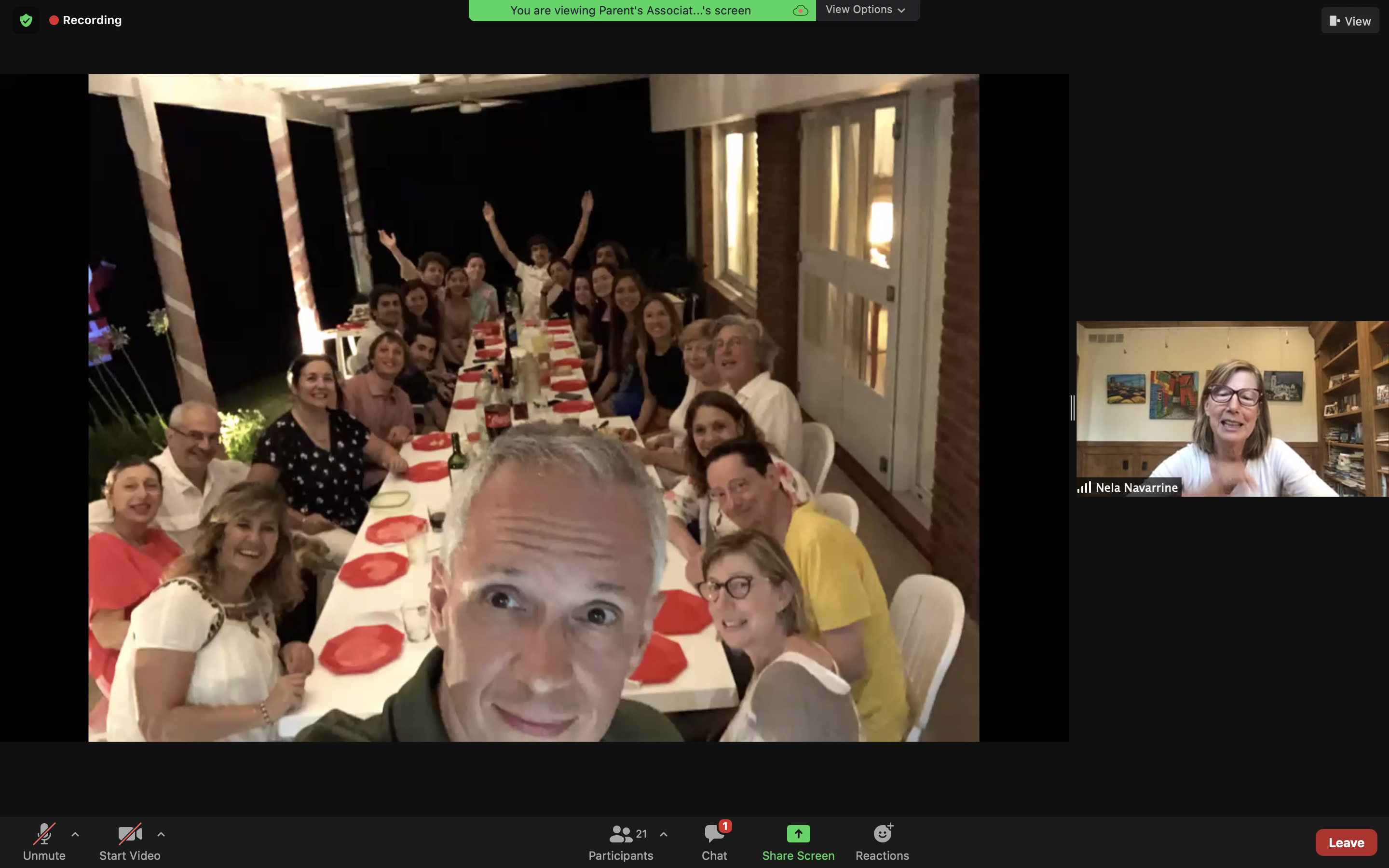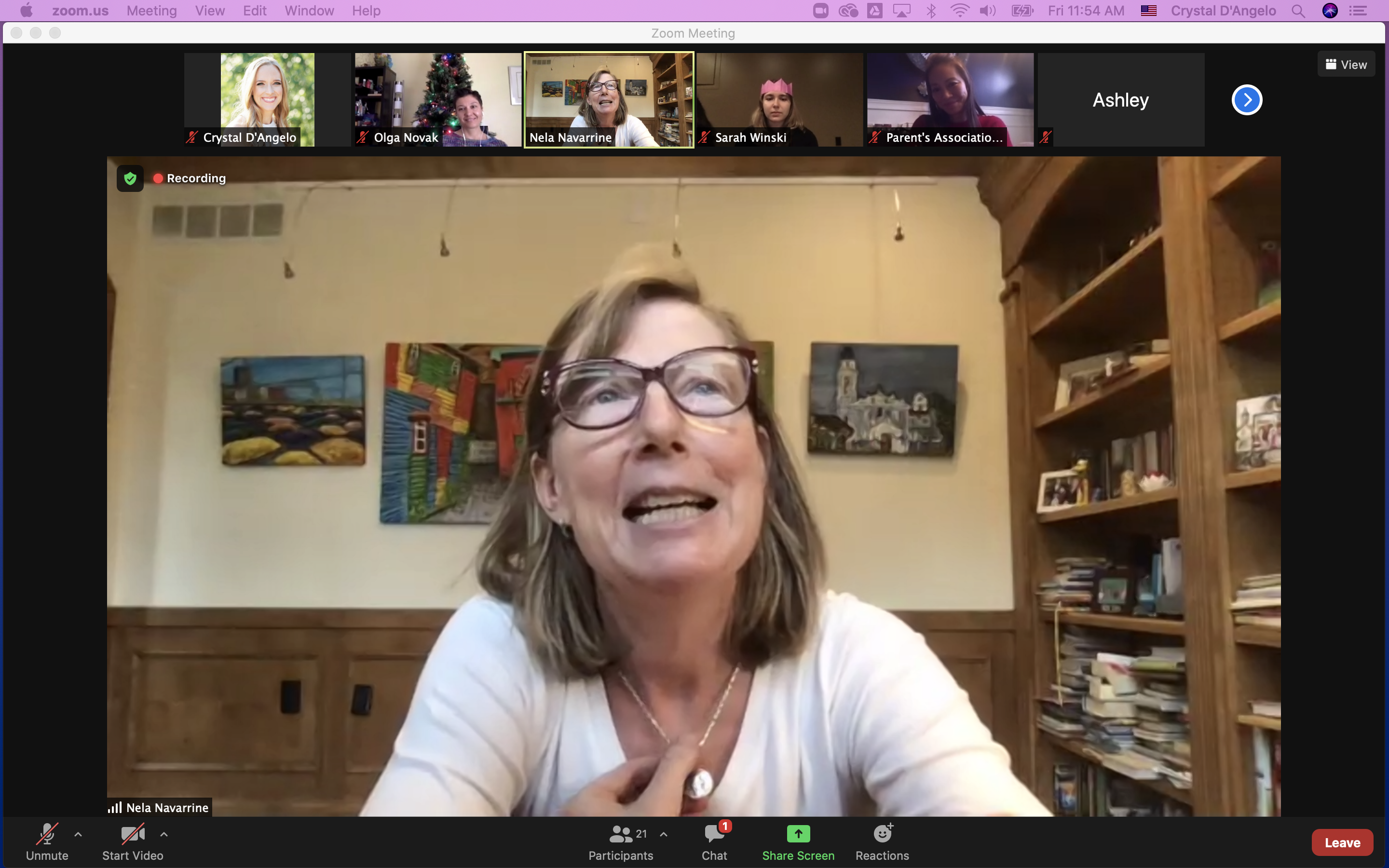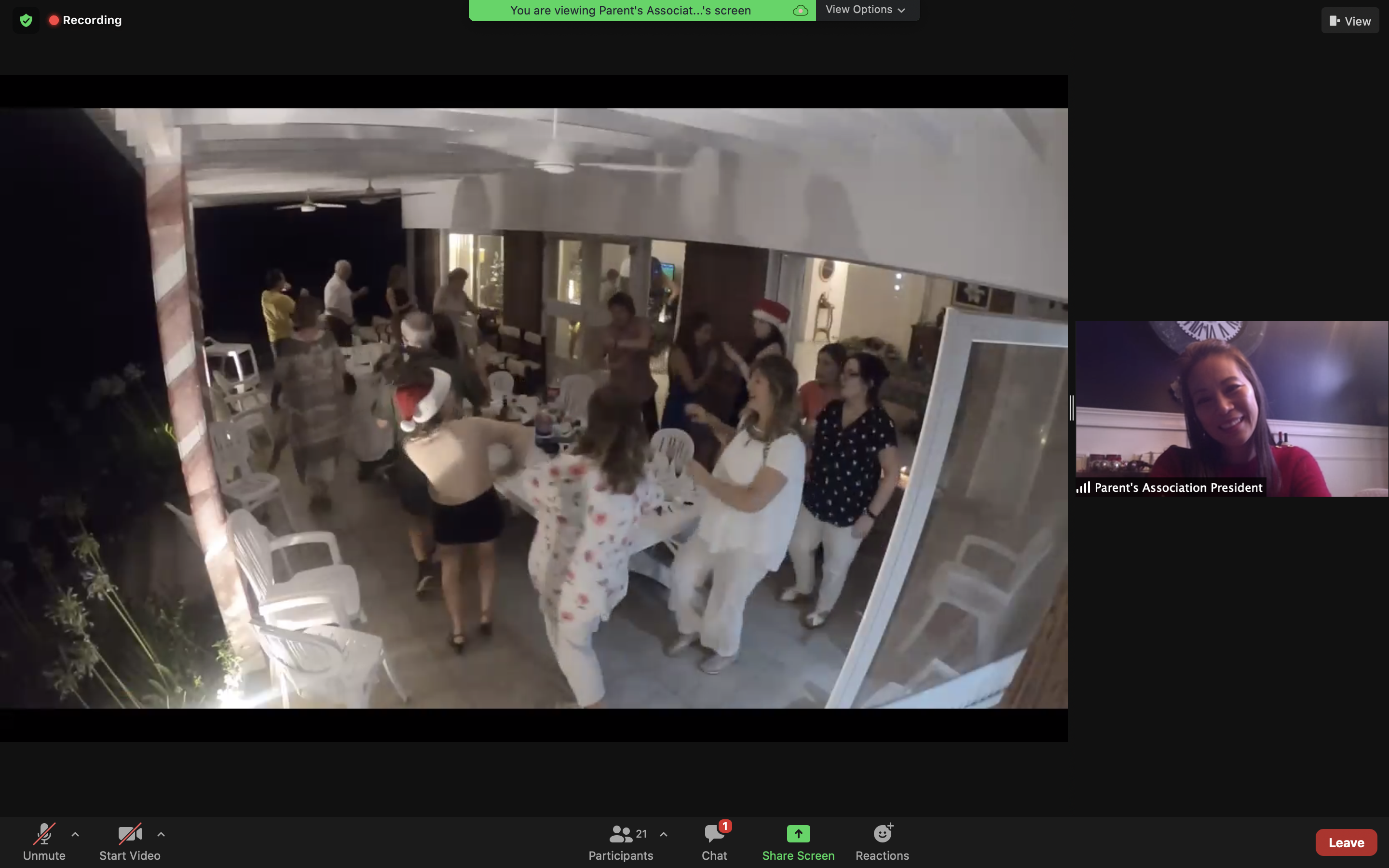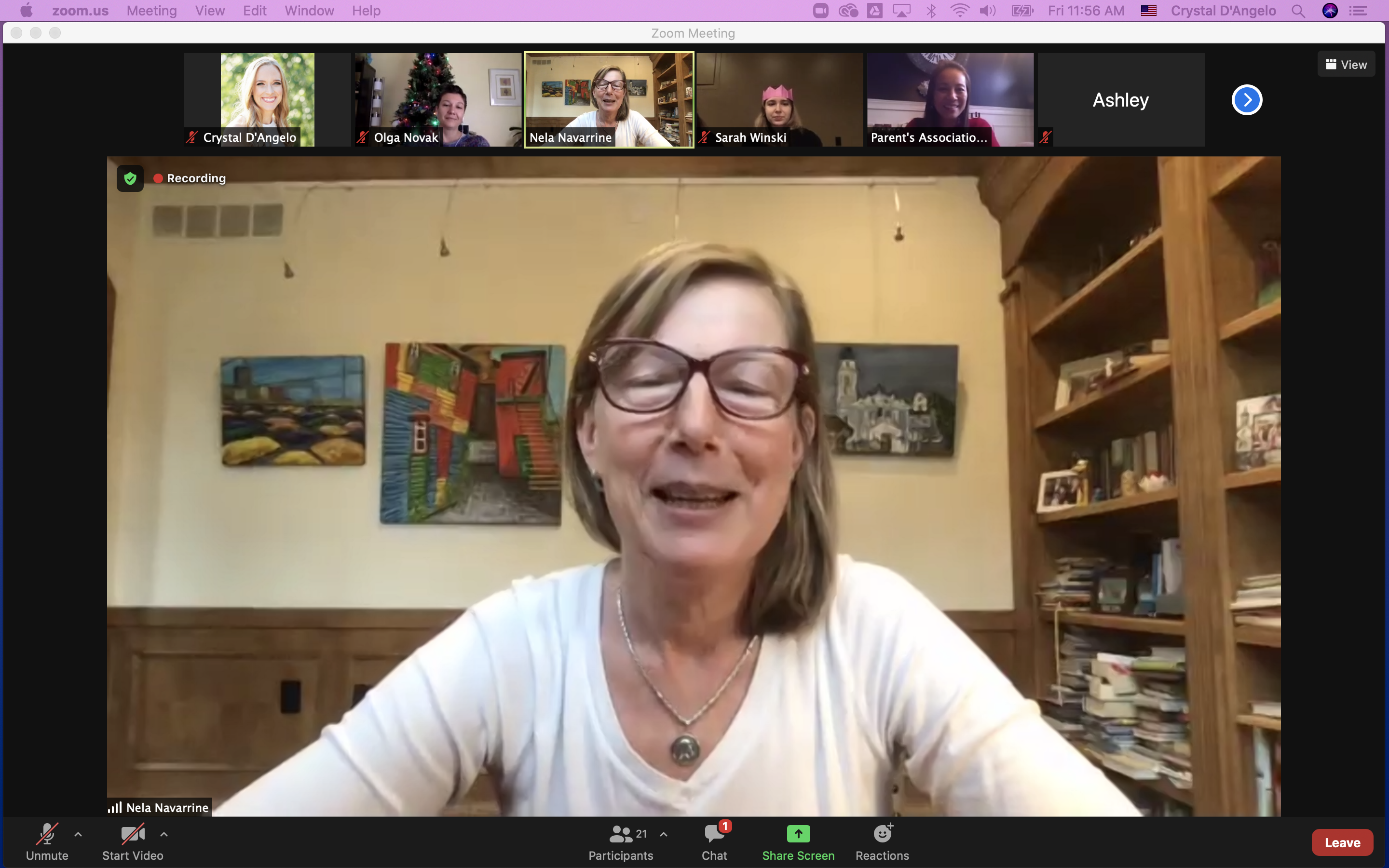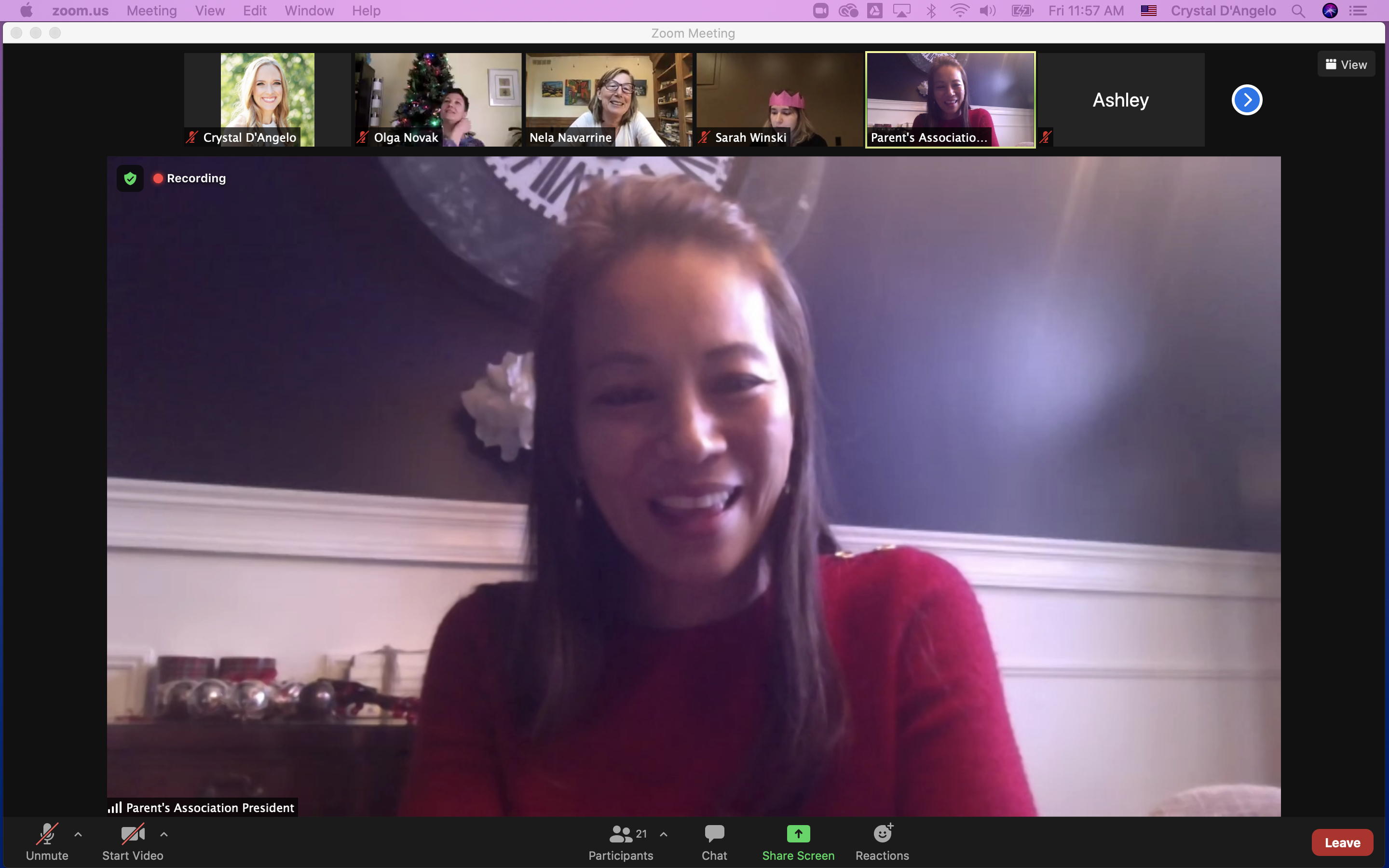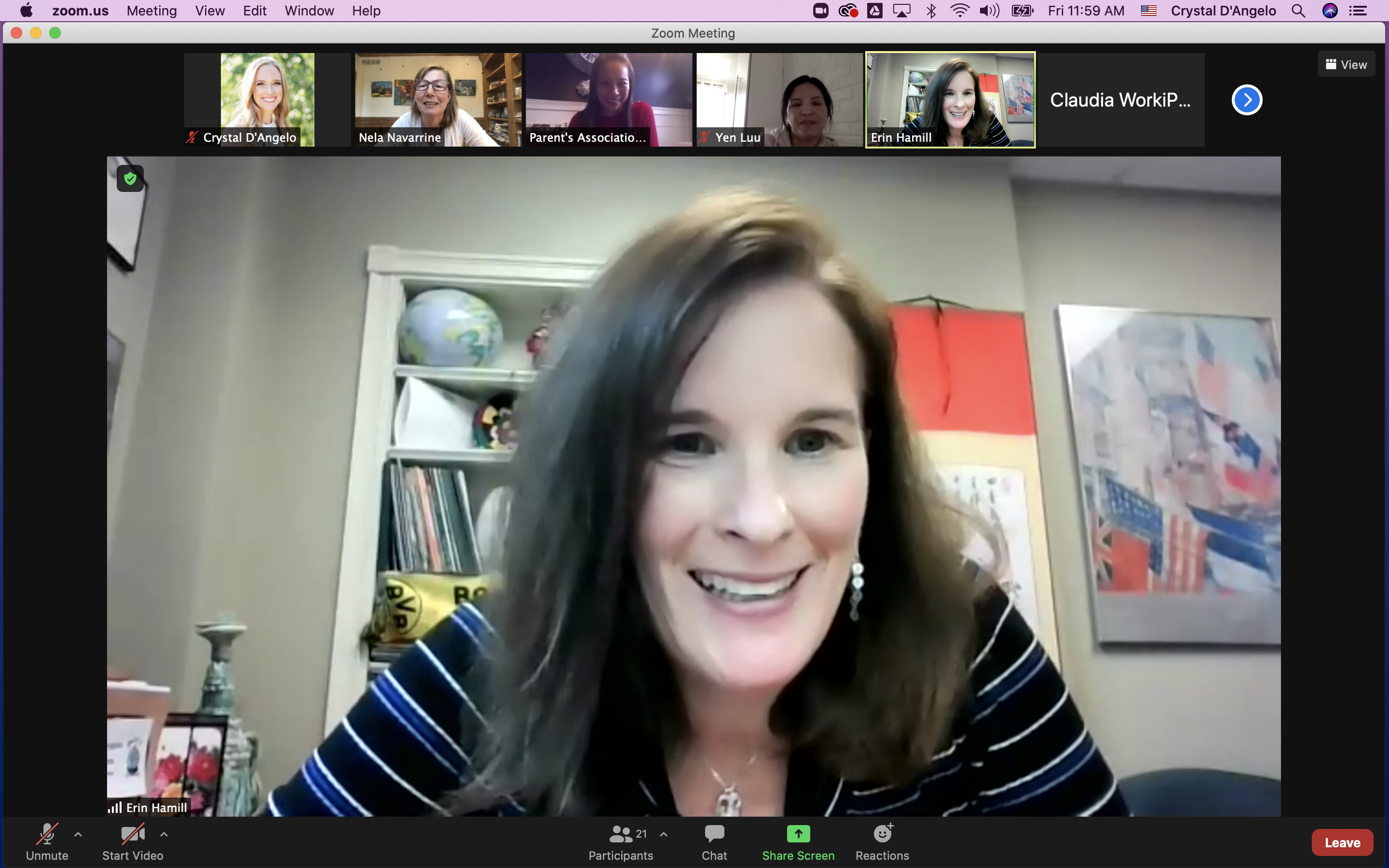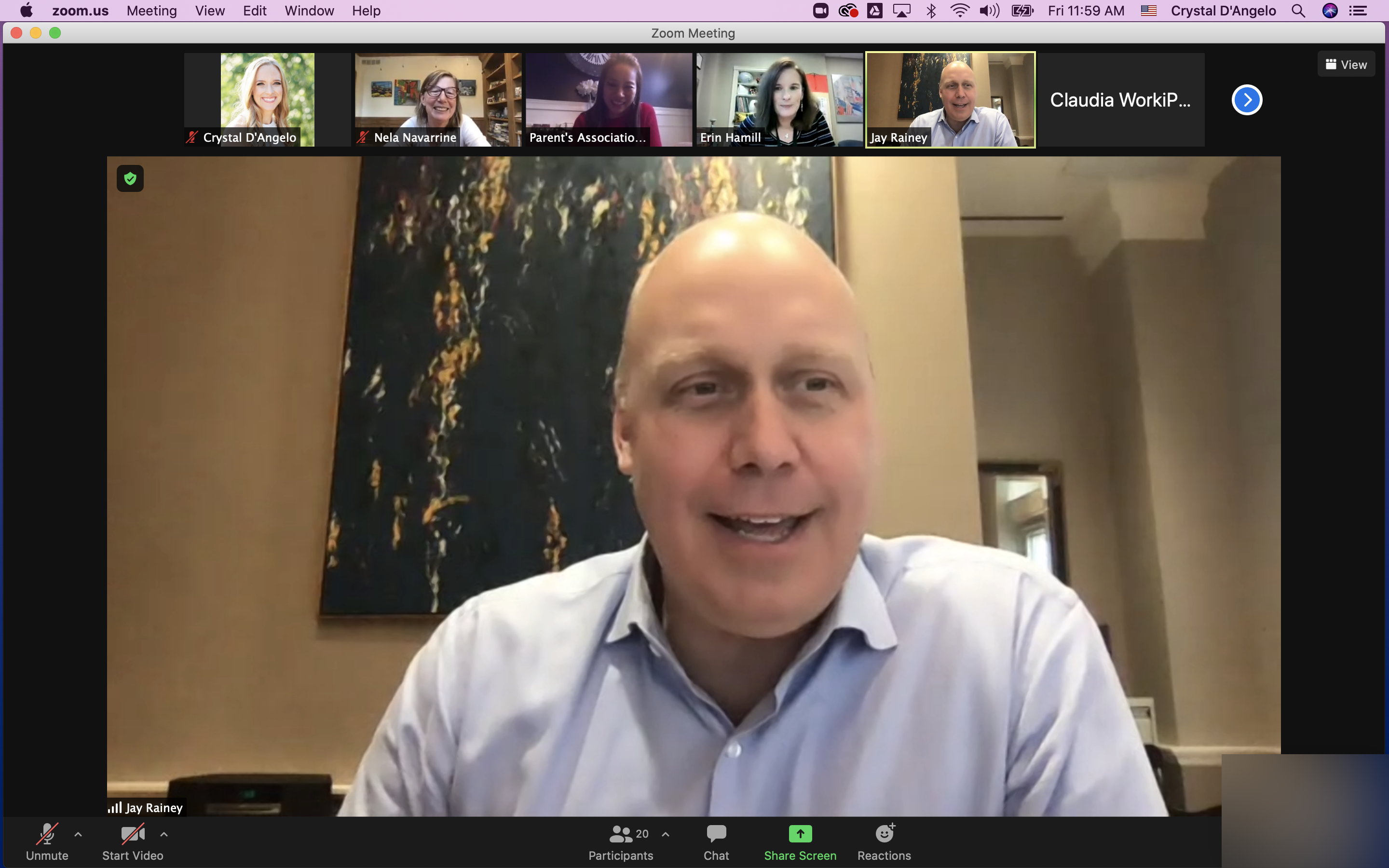Have you ever wondered how certain holidays are celebrated around the world at this time of year? Last week, the MICDS Passport Series virtually visited four countries through current MICDS parents to find out just that! Get your own passport of knowledge stamped as you read through the summaries of the holiday customs presented about Mexico, England, Russia, and Argentina.
La Navidad (Christmas) in Mexico, presented by Adria Concannon
In Mexico, the Christmas season begins on December 12 with celebrations relating to the Virgin of Guadalupe, the Patroness of Mexico. According to tradition, the Virgin Mary appeared to Juan Diego, a man of Aztec descent. Nine days before Christmas, from December 16-24, the Posadas-Novenas takes place which are preparations for the arrival of Christmas Day. These are reenactments of Joseph and Mary looking for a place to stay. After all, “posadas” means “inn.”
Families and friends read a script and celebrate with parties at this time. They celebrate with piñatas and nochebuenas poinsettias. Piñatas are originally from Italy and the Spanish brought them to the Americas. Initially, they were made of plain clay containers before being decorated with ribbon and colored paper. They are filled with seasonal fruit such as tejocote, jícama, lima, tangerine, and oranges, as well as sugar cane, peanuts, and a variety of candies. The peanuts are sugar-coated and are different colors. Then, you’ll often see nochebuenas poinsettias during the Christmas celebration. For the Aztecs, the red flower symbolizes the blood of the sacrifices they have offered to the sun. In the United States, the flower is known as “poinsettia” in honor of Joel Poinsett, the first U.S. ambassador to Mexico and a botanist.
The last posada is Christmas Eve which calls for a late-night mass called the “Mass of the Rooster.” Then, on Christmas Day, kids receive gifts from Santa and families relax together, tired from the nine days of Posadas-Novenas.
The celebration continues on Three Kings Day, January 6, on which it is thought that three kings presented baby Jesus with gifts. Mexicans serve a traditional bread or cake called “Rosca del Reyes.” Hidden in the bread is a tiny baby Jesus figurine. Guests randomly take a portion of the bread and whoever finds baby Jesus automatically becomes his godparent. Lastly, February 2 is thought of as the day when Jesus is presented to temple. Following suit, kids dress nicely on this day and are presented to church.
Adria concluded her presentation with a video of her son and his friends playing traditional Mexican Christmas music. ¡Feliz navidad!
British and Oxford University Christmas Traditions, presented by Oxford graduate Sarah Winski and Liesel Duhon
Next, the Passport Series virtually visited Britain to take in some of their Christmas traditions from the perspective of Sarah Winski. Sarah lived in Britain for three years as an Oxford student and talked about both British and Oxford University Christmas traditions, the latter which she called Oxmas (Oxford Christmas).
On Christmas Day, everyone pops their own Christmas cracker which Sarah demonstrated for the Passport Series attendees on Zoom. In it, there’s a paper crown, a toy, and a silly joke. The joke in her cracker, for example, was “I gave away my dead batteries totally free of charge.” In addition to crackers, Christmas markets can be seen throughout the U.K. stocked with local gifts, food, and mulled wine. Both mulled wine and mince pies are very popular around British Christmas celebrations. There are also stockings which are hung on the ends of each child’s bed and all gather to watch the Queen’s Christmas speech at 3 p.m. on Christmas Day.
Sarah went on to share that Oxmas and British Christmas dinners are similar to Thanksgiving in the United States in that people enjoy the same types of food. There is turkey, stuffing, ham, Yorkshire pudding, as well as the focus on togetherness and family.
At Oxford, each of the 36 colleges has its very own Christmas tree. The festivities begin at the beginning of November and Oxmas itself is celebrated on November 25, a month before Christmas. This is because most students are with their families on actual Christmas Day. People often dress up for Oxmas. At her college, Pembroke, students wear their academic gowns to celebrate the occasion.
Sarah also described some of the college-specific traditions of Pembroke. Students act out a Three Kings alternative Christmas tale in a college-style format. Three students act in the main roles and three more students act as the three kings. There is free mulled wine provided. Then, students from her college gather on the front lawns of other quads while singing Christmas carols “rather obnoxiously,” she shared. They follow a Carol Master and even incorporate specific dances with each carol to add to the fun!
Next, Sarah talked about new Christmas traditions such as the effort to reduce the impact of Christmas on the environment. Did you know that in England alone, 227,000 miles of wrapping paper are used each Christmas? This is the length of the Great Wall of China multiplied by 17! Nowadays, there are more alternative forms of wrapping being utilized since wrapping paper is not recyclable. People use brown paper, newspapers, and even cloths or scarves. This effort is especially prominent at Oxford.
Russian New Year Traditions presented by Olga Novak
The next speaker, Olga Novak, also had a fascinating perspective to share having lived for 22 years in Russia and now 22 years in America. Regarding her time in Russia, she described the Soviet Union, composed of 15 republics, as a secular country where the biggest holiday celebrated is the new year. The non-religious component really makes a difference regarding the new year’s date. The Russian Orthodox Church uses the Julian calendar while the rest of Russia, as a secular country, uses the Gregorian calendar.
- Western Christmas is December 25 (Gregorian Calendar) and Russian Orthodox Christmas is January 7 (Julian Calendar)
—> For Eastern Orthodox Christians, Russia’s New Year’s is celebrated before Christmas! - New Year’s Eve is December 31 (Gregorian Calendar) and the Old Russian New Year is January 14 (Julian Calendar)
Olga went on to say that you’ll notice many elements of Christmas in the Russian New Year’s celebration. First, every household has a New Year’s Tree which looks just like what we call a Christmas Tree in the United States. All cities have a big, central tree for their respective city and hold holiday celebrations around it.
Instead of Santa Claus, Russians refer to an old man called Grandpa Frost and his granddaughter, Snow-girl, who is his assistant. Both Grandpa Frost and Snow-girl are said to live in the North Pole and come out when it’s cold. They have a “troika,” a traditional Russian harness driving combination where three horses are harnessed abreast, to pull their sleigh on New Year’s Eve. Unlike Santa Claus, Grandpa Frost is not shy or sneaky. He knocks on the door and every child presents something to him (i.e., poems and songs). Then, he gives each child their own gift.
There is a small nod to Halloween in the Russian New Year’s celebration. Kids wear cute costumes on New Year’s. The costumes are not scary though; kids dress up as animals, characters from fairy tales, or have holiday-themed costumes.
Most cities in Russia build elaborate snow and ice towns as part of the holiday festivities. There’s a lot of snow in the winter, so people build slides, cartoon characters, and all sorts of structures. Families hang out at the ice towns while kids run around. There are also arts and crafts such as making paper snowflakes or Zarubin art postcards. These postcards depict animals, treats, friendship, and celebration.
New Year’s focuses first on saying goodbye to the old year. Then, at midnight, the Russian president gives a speech to help welcome the new year. This family holiday is also full of Russian delicacies: dumplings, salads, cake, and other sweets. Friends are invited over so that no one is alone for the New Year’s holiday.
Christmas in Argentina, presented by Nela Navarrine
Last but certainly not least, the Passport Series learned all about Christmas in Argentina from Nela Navarrine. Unlike the Russian New Year’s Celebration, Christmas in Argentina is strongly focused on religion. Families get together and celebrate the hope that the newborn baby Jesus brings.
Christmas Eve is a very important holiday. Families spend time together, often at grandparents’ homes, with grandkids, in-laws, and friends. Church occurs from 7 to 8 p.m., followed by an informal potluck dinner around 9:30 p.m. It’s usually hot so the dinner takes place outside or within a home that has its windows open. Food includes red meat, chicken, salads, and most items are at room temperature so they can stay out for all to munch on throughout the evening. From 9:30 p.m. through midnight, families and friends enjoy eating and talking together.
At the stroke of midnight, a toast is made with cider from Spain and pan dulce (sweet bread) which was a tradition that originated in Italy. The festivities continue with prayers for the newborn that brings hope to all. Next, there is one gift for each person, but the focus is not on gifts. The gift might simply be something that costs $10-$15 like a scarf. The youngest child distributes a gift to each family member and the gifts are opened one-by-one. The celebrations stay together until about 3 a.m., spending much of the time dancing, singing, sharing photos, and spending time together as a family. Nela showed a video of her family dancing around their dinner table outside in celebration. They also have small Christmas trees for the occasion.
However you celebrate the holidays this year, maybe try adding in some of these cultural customs! How fun would it be to see who gets baby Jesus in their portion of Rosca del Reyes, wear your paper crown from your British Christmas cracker, build an ice town as if you’re in Russia, and stay up late dancing with your family? Thank you to our Passport Series presenters for sharing their special holiday experiences with all of us!
